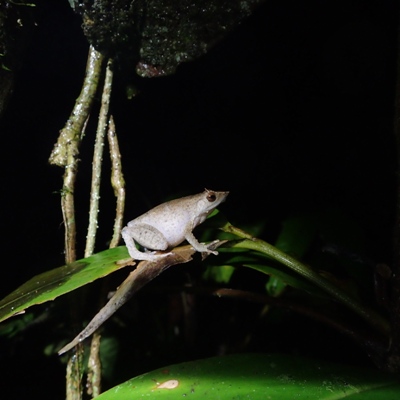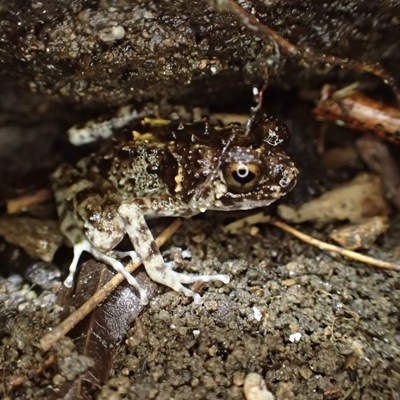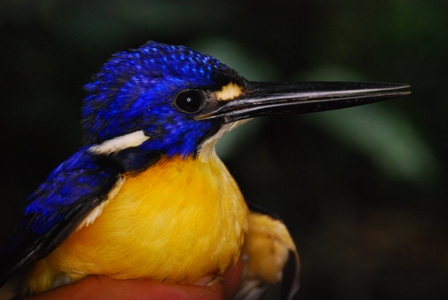Friday 7th November, from the base camp in Urisa.
While everybody is busy bringing down the camp, the ornithologists and the herpetologists are back from their stay near Sewiki lake.They tell us about their adventures. The terrain was rugged and difficult, overlooked by very steep, unstable and sharp-edged limestone lapies. Their stay was punctuated by violent storms, which were a nightmare for the ornithologists but a paradise for the herpetologists.
Antoine, a frog specialist, blessed the rain, which brought out frogs in hundreds. After the first thunderstorm, he managed to record 17 different species in one evening, some of which he had not yet indexed. There were also some species which were present in Lobo, but which had not sung there. Antoine notes that, unlike in Lobo, no snakes were caught, except one specimen in Urisa, and there were very few lizards. He also underlines the absence of frogs during the day, contrary to what he has been able to observe in the Amazon.
As to the birds, many were caught despite the rain and the rugged terrain. The four ornithologists caught typical low-altitude forest species, some of which are rare: a bird of paradise, a pygmy parrot, kookaburras… They point out the absence of undergrowth passerine birds. According to Christophe, it could be due to the abundance of stags in quite flat areas, as they are most accessible to humans and cervids. Deers were introduced onto the Island of New Guinea in the middle of the 19th century. As there are no big predators on the island (except humans), they proliferated and colonised the most favourable areas to the detriment of other species. Therefore, the Island of New Guinea, despite its large size, is vulnerable to the introduction of species. Generally speaking, islands constitute weak ecosystems, and the introduction of species often poses ecological problems.
The cave exploration continued until today. Divers drew up the topography of two caves featuring resurgences of clear water. They were able to reach a flooded fault that had not been visited yet. They could also observe a diversified fauna: insect larvae, shrimps, crayfish, several species of fish… and some really surprising species too, in particular, a pig-nosed turtle. They think that this aquatic life is sustained by bats which nest by the thousands in the cave. They produce a large quantity of guano that falls into the water and feeds aquatic species. Arnaud, a cave insect specialist, was part of the explorers’ team. He is also happy with his collections. He has not found any typical cave-dwelling species (eyeless and with no pigmentation), but has nonetheless found many potentially new species.
(The beginning of the text was translated by Pauline Pereira and Evelyne Viloteau, the end by Eric Carron, Mathilde Lebrun and Laura Le Cardinal, L2 SVC–Life & Earth Sciences–UM2, France)





